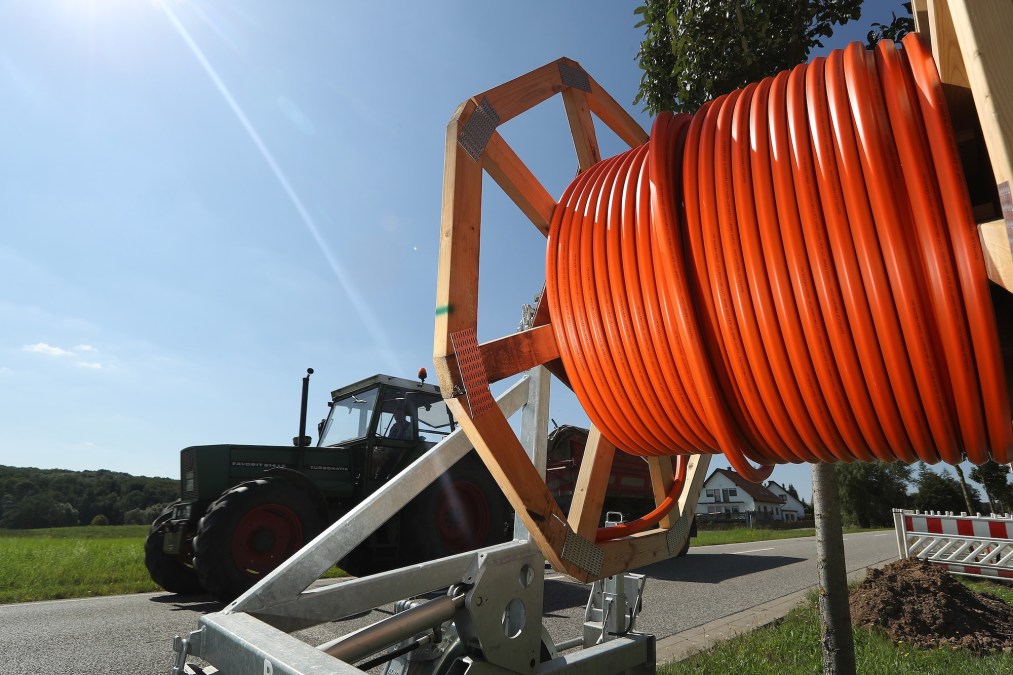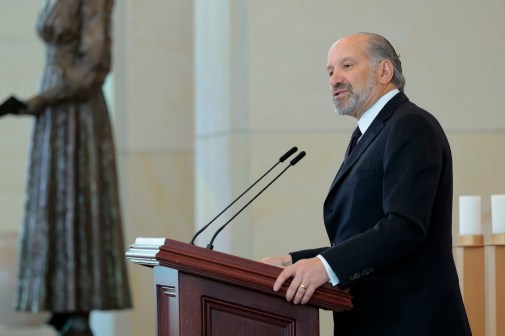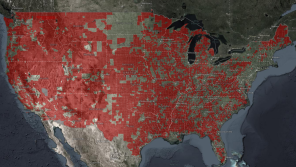Broadband study finds subsidies ‘turbocharged’ fiber deployment

Results from a recent study from the Fiber Broadband Association show that internet connectivity through fiber deployment has been on the rise over the last eight years, “turbocharged” by federal subsidies and other broadband expansion programs.
Forty-six percent of locations — or more than half of U.S. households — had access to fiber as of June 2023, according to data from the Federal Communications Commission. Those rates are nearly three times higher than they were eight years ago, said Michael Dargue, an executive with the consulting firm Cartesian, during a webinar on Wednesday about the report.
The report, which was conducted by Cartesian, examined the deployment of fiber deployment throughout the United States, including where it’s being built, how much is being built and who is building it. It also dove into factors influencing the cost of fiber deployment.
“The growth has been pretty steady and … there was a slight slowdown around about 2020-2021, no doubt a consequence of COVID lockdowns,” Dargue said. “Since then, you’ve had a decent uptick and fiber coverage is growing at a pretty healthy clip now.”
The study also showed the amount of choice people have when choosing a fiber provider is also promising when compared to 2015.
“There were very few locations that had a choice of fiber providers, but now … you can see the trajectory here is upward,” he said. “Over time, we’ve seen that more and more people have access to a choice of fiber networks.”
The gradual uptick the survey identified has been spurred by network upgrades and more service providers making the switch to fiber, Dargue said.
In 2016, Verizon had reached about 8 million locations and was the largest fiber provider in the country, but now AT&T has since overtaken Verizon in terms of fiber coverage, according to the study. However, telecommunications providers, cable companies, municipalities and other providers outside of AT&T and Verizon have accounted for most of the growth in recent years, Dargue said.
“We’re seeing fiber being provided by more providers to more people and offering more choice,” he said.
When it comes to where new fiber is being deployed, it still remains true that urban communities are best served with an estimated 92% of locations having access as of last year. The study also found that fiber has been growing at every population density, including suburban and rural areas.
“We definitely see fiber being pushed out further to more people, particularly into rural areas,” Dargue said, noting that funding from federal programs like the Broadband Equity Access and Deployment Program and other subsidy programs are helping to “turbocharge” fiber expansion.
The report also examined factors surrounding fiber deployment costs providers are facing, including environmental factors like terrain and distance between homes, construction methods and financial costs.
For underground and aerial deployments, labor is the main driver when it comes to cost, according to the study. On average, labor accounted for 73% of the cost associated with underground deployments and 67% of the cost with aerial.
The study found that more densely populated an area is, the higher the costs associated with fiber deployment tends to be, for both aerial and underground construction. Soft-earth environments were identified as the cheapest to construct fiber, while rocky, mountainous environments were most expensive.
“These findings mirror how costs will increase in more difficult terrains, which often require more time and labor and complex machinery to cut through,” said Meg Corriveau, a consultant with Cartesian who helped conduct the survey. “This is important for determining what we would expect the price of deployment to be in certain areas.”






